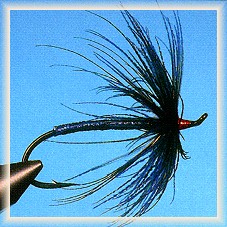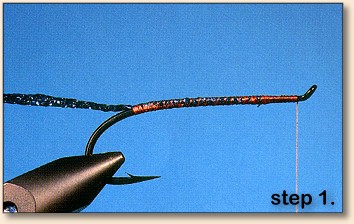
Step 1: Place the hook in the vise and apply a thread base
that starts at the eye and stops at the end of the shank. On
this hook we identify "the end of the shank" as the position
directly above the throat of the barb. Select a 10-inch section
of peacock blue Diamond Braid and tie it to the top of the hook
while advancing the thread back to the hook eye.
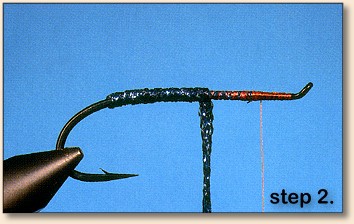
Step 2: Wrap the thread back from the eye to the start of the
looped platform and leave it there. Wrap the Diamond Braid
forward forming the body. Notice the material has a tendency
to twist, but it is quite easy to place a counter twist as
each turn of the diamond Braid is applied to the hook thus
producing a nice, smooth body.
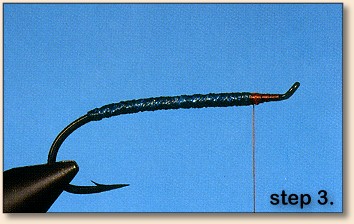
Step 3: Continue wrapping the body material forward to meet
the thread. Tie it off and trim away the waste end.
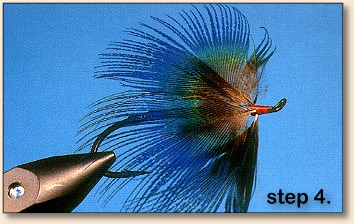
Step 4: Prepare two (size 2 hook) or three (size 2/0 hook)
peacock breast feathers by stripping away the fuzzy material
at the base of the stems. Tie the feathers to the shank,
staggering their position; in this case we are using a 2/0
hook so they are placed on the near side, top, and far side
of the hook. This positioning is what surprised us. John's
flies always looked so neat we just assumed the hackle was
constructed from one feather only!
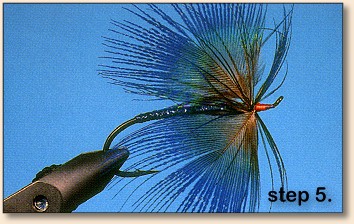
Step 5: Start with the offside feather and wrap it one turn
around the hook. We suggest working that feather behind and
in front of the other two while making the wrap. Tie it off
and remove any waste end.
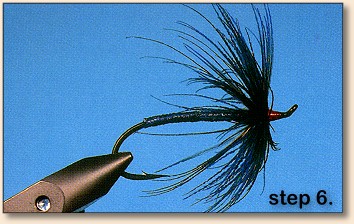
Step 6: Now select the top feather and wrap it the same as
described in Step 5. Tie it off and trim the waste end. Wrap
the last hackle in front of the other two, tie it off, and
remove the excess. Build the thread head tight against the
hackle to force all three feathers together. Whip finish and
remove the thread. Apply a coating of Aqua Head or cement to
the whip finish. ~ Al and Gretchen

